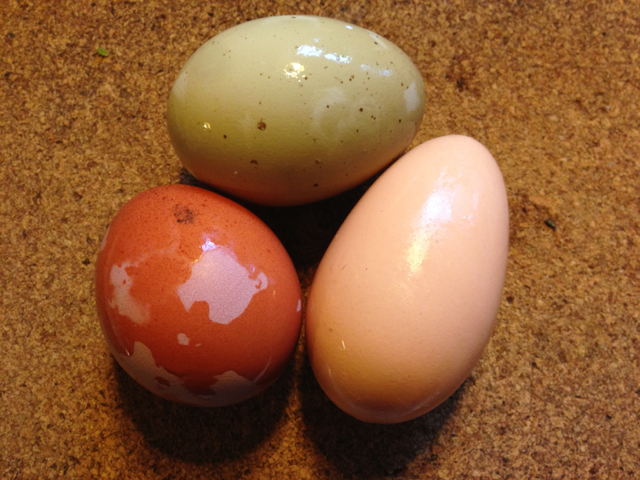[wpvideo VZses43h]
It’s the start of another year. I woke up to a mild day with fog drifting through the tree branches. Now there is some sunlight filtering through the clouds. Not a bad way to begin the year.
A great way to start the year is by making tofu. It’s a simple process, and I find going through the steps very relaxing, especially squeezing the soy milk out of the crushed, cooked soybeans. The result is so fantastic that I haven’t bought tofu in many years. A dish of freshly made, still warm tofu is about the most delicious thing one could ever eat. But like so many things, if you want it, you’ve got to make it yourself.
A byproduct of making tofu is “okara” which is the leftover groundup soybeans after you’ve squeezed the soy milk out of them. Okara is delicious by itself or made into patties, or muffins or meatballs, but it’s also something the chickens and our dogs go nuts over.
The okara you buy in stores can be very dry, but when you hand squeeze soy milk, you leave enough of the moisture in the okara that it retains a lot of flavor.
According to research from 2004 where researchers compared chicken and human genomes, humans and chickens share 60 percent of the same genes. It’s believed that you need to go back 310 million years to get to a common ancestor between birds and mammals. It’s amazing that even after 310 million years, humans and chickens still share more than half of the same genetic material. It explains some deep-rooted behavior which we share.
Watching roosters jostle with each other, build up their harems, and try to outdo each other, reminds me of the way some men just can’t help themselves. They’ve got to be in control and take as much as they can. There has to be a genetic basis for this behavior. You see it in so many animals including humans.
Researchers often warn against projection our feelings into animals. This is true. You can’t even assume that other humans are feeling what you are feeling. And yet, since we share a common ancestor and share much of the same genetic material, I also believe that it’s just as naive to assume that animals aren’t like us in more ways than we imagine.
May 2014 be a wonderful year for us all.


